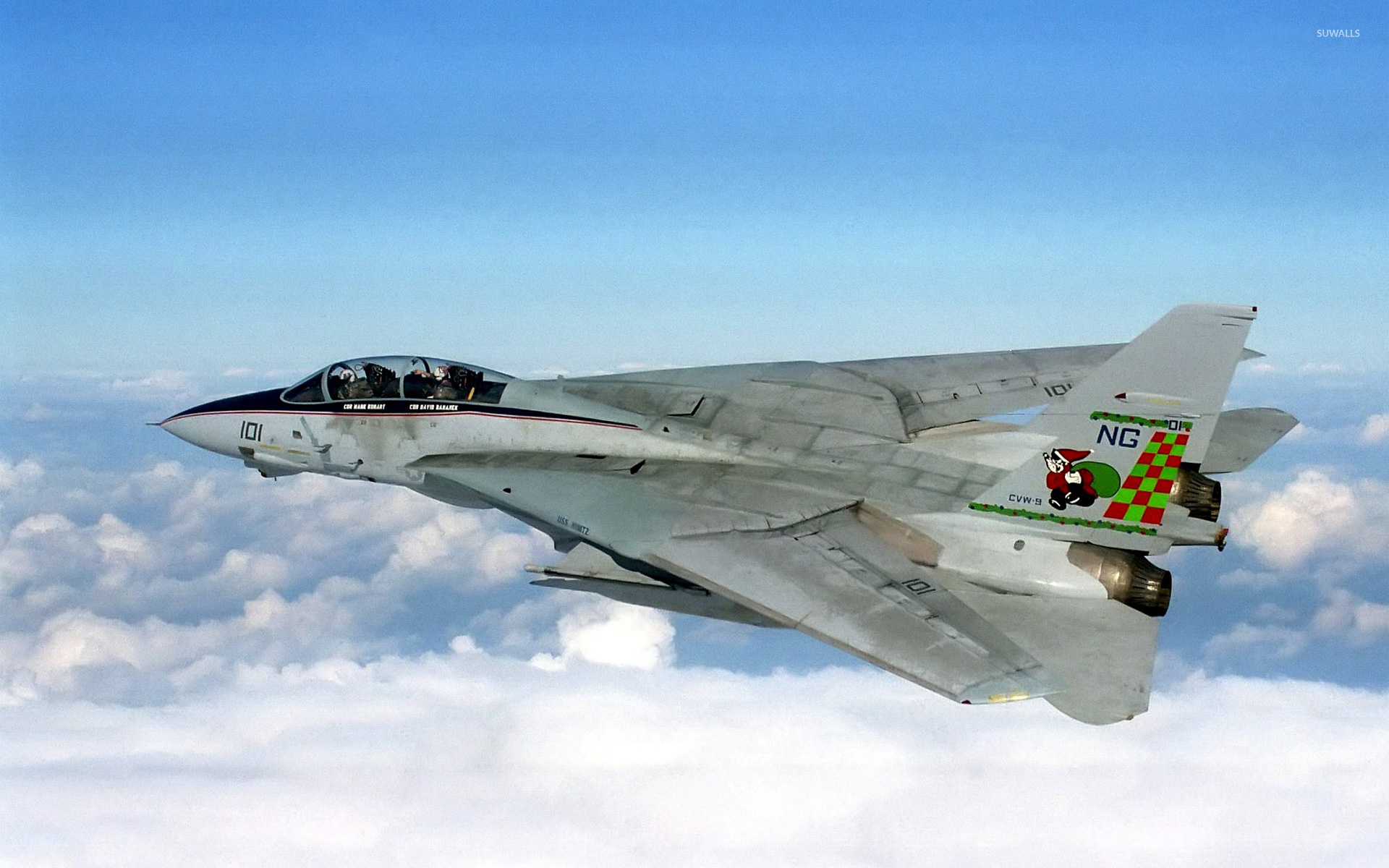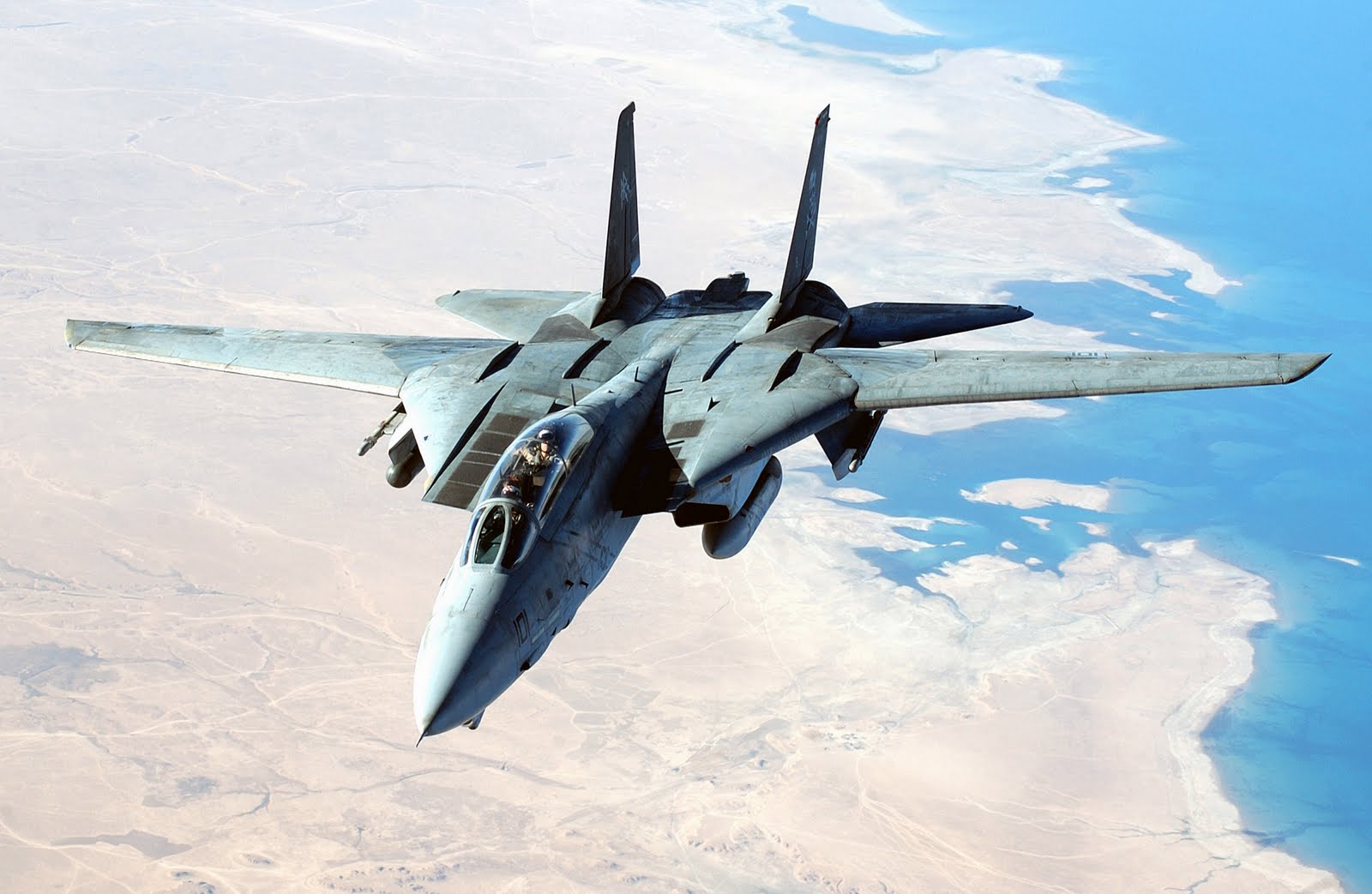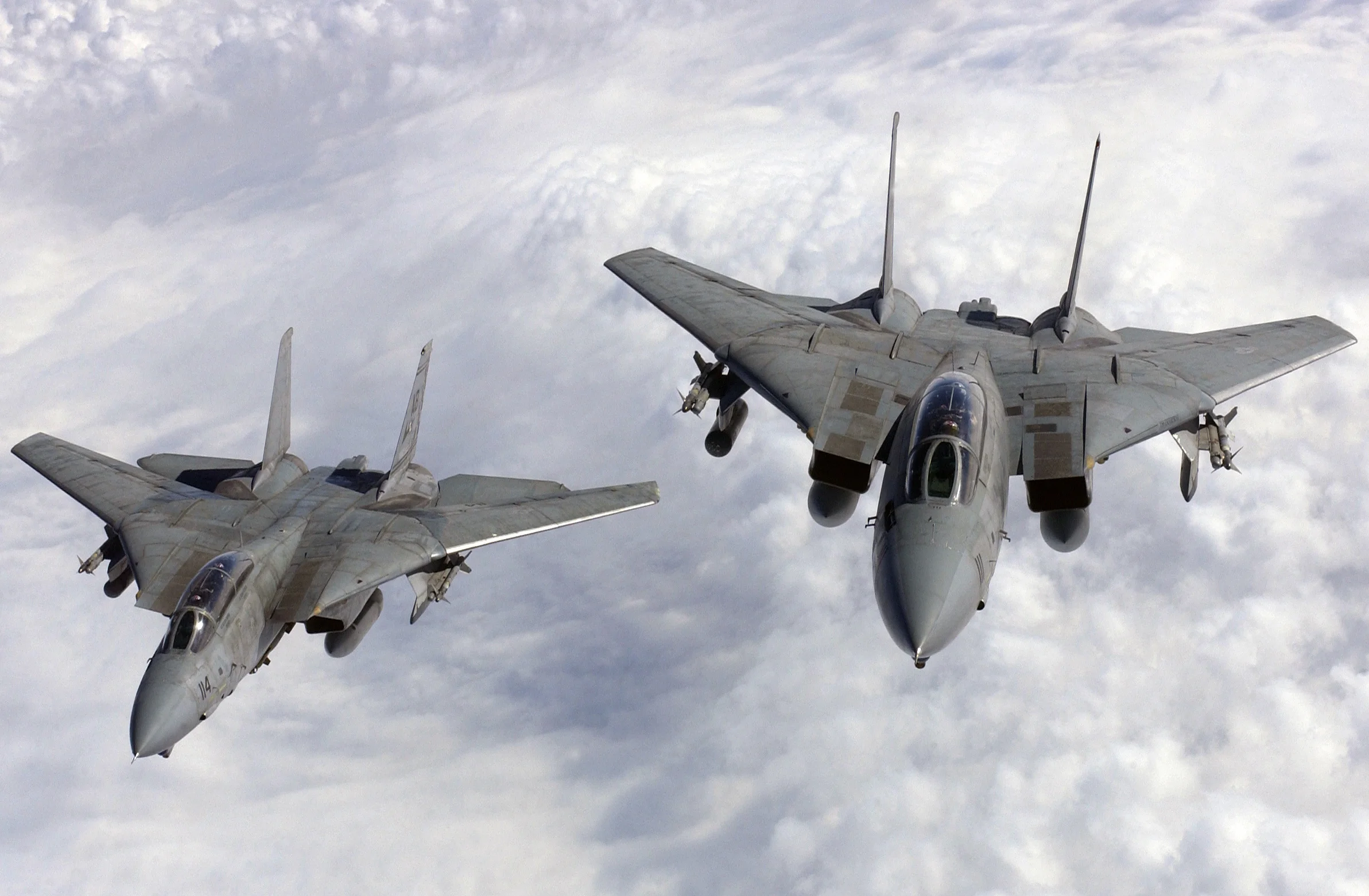Iran's F-14 Tomcats: An Unlikely Enduring Legacy
The Grumman F-14 Tomcat, an iconic symbol of American air power, is best known for its variable-sweep wings and starring role in Hollywood blockbusters. Yet, far from its original home, this formidable fighter jet continues to defy expectations, serving as the backbone of the Islamic Republic of Iran Air Force (IRIAF). The story of the F-14 in Iran is a remarkable saga of geopolitical shifts, technological ingenuity, and sheer perseverance against overwhelming odds, a testament to an enduring legacy that few would have predicted.
This unique chapter in aviation history began decades ago, rooted in a very different geopolitical landscape. Today, as satellite images and recent reports hint at the fleet's precarious condition, the world watches an extraordinary tale unfold—one of a nation determined to keep its aging, yet still potent, "Persian Tomcats" airborne, despite decades of sanctions and isolation. This article delves into the fascinating journey of these legendary aircraft, from their initial acquisition to their current status, exploring the challenges and triumphs that define their service.
Table of Contents
- The Dawn of a New Era: Acquisition of the F-14 in Iran
- A Geopolitical Earthquake: The 1979 Revolution and its Aftermath
- Persian Tomcats in Combat: The Iran-Iraq War
- Defying the Odds: Maintaining the F-14 in Iran Under Sanctions
- The Unique Export Story of the F-14
- Current Status and Challenges for the F-14 in Iran
- The Legacy of the F-14 in Iran
- The Last Flight of the Persian Tomcats?
The Dawn of a New Era: Acquisition of the F-14 in Iran
The story of the F-14 in Iran begins in the mid-1970s, a period vastly different from today's geopolitical landscape. At that time, Iran, under the rule of Shah Mohammad Reza Pahlavi, was a key strategic ally of the United States in the Middle East. The Shah harbored ambitious plans to modernize Iran's military and establish it as the dominant regional power. To achieve this, he sought the most advanced military hardware available, and the F-14 Tomcat, then America's premier air superiority fighter, fit the bill perfectly. Originally, Iran purchased 79 of these advanced fighters from the United States during the Shah’s rule in the 1970s. This massive procurement, part of a larger arms deal known as "Project Persian King," included not just the aircraft but also a substantial arsenal of AIM-54 Phoenix long-range air-to-air missiles, spare parts, ground support equipment, and extensive training for Iranian pilots and ground crews. The acquisition was a testament to the close military ties between the two nations, a relationship that was simply another time, unthinkable in the decades that followed. The F-14s were a significant upgrade to Iran's air force, providing unparalleled capabilities for air defense and interception, particularly against the threat of Soviet incursions.A Geopolitical Earthquake: The 1979 Revolution and its Aftermath
The strategic alliance, however, was shattered by the 1979 Islamic Revolution. This monumental event fundamentally altered Iran's political landscape, transforming it from a Western-aligned monarchy into an Islamic Republic. The revolution severed diplomatic and military ties between the United States and Iran, bringing an abrupt halt to all ongoing military contracts, including the support for the F-14 fleet. Suddenly, Iran found itself with a highly sophisticated, American-made fighter jet fleet, but without access to the vital spare parts, technical support, and ongoing training that such advanced aircraft required. The challenge was immense. The F-14 is a complex machine, demanding meticulous maintenance and a constant supply of specialized components. With the primary supplier now an adversary, many predicted that Iran's F-14s would quickly become grounded, rendering them useless. This period marked the beginning of Iran's extraordinary journey to maintain its Tomcat fleet against overwhelming odds, forcing the nation to develop unprecedented levels of self-reliance and ingenuity in its defense industry.Persian Tomcats in Combat: The Iran-Iraq War
Just a year after the revolution, Iran faced another existential threat: the full-scale invasion by Iraq in September 1980. The Iran-Iraq War, which lasted for eight brutal years, became the ultimate proving ground for the F-14 in Iran. Despite the severe limitations imposed by sanctions and the departure of American technicians, the Persian Tomcats played a crucial role in defending Iranian airspace and conducting combat missions. Iranian F-14 pilots, many of whom had been trained by Americans, quickly adapted to the new realities. They utilized the F-14's superior radar and long-range AIM-54 Phoenix missiles to devastating effect against Iraqi MiG and Mirage fighters. Reports from the war suggest that the F-14 achieved a remarkable kill ratio, often engaging Iraqi aircraft from distances beyond their adversaries' visual range. The F-14's ability to carry multiple Phoenix missiles and track numerous targets simultaneously made it a formidable interceptor, often forcing Iraqi aircraft to abort their missions or retreat. The war highlighted the F-14's combat prowess and, more importantly, demonstrated Iran's unexpected ability to keep these complex machines operational under wartime conditions, a testament to their resourcefulness and determination.Defying the Odds: Maintaining the F-14 in Iran Under Sanctions
The continued operation of the F-14 in Iran for over four decades, despite a comprehensive arms embargo and lack of manufacturer support, is arguably one of the most remarkable feats in modern military aviation history. The challenges were monumental, encompassing everything from basic spare parts to highly sophisticated avionics and engine components.Reverse Engineering and Domestic Production
To keep their F-14s flying, Iran embarked on an ambitious program of reverse engineering and domestic production. Iranian engineers and technicians meticulously studied the existing components, often dissecting parts to understand their design and manufacturing processes. They then attempted to replicate these parts using local materials and manufacturing capabilities. This process was fraught with difficulties, requiring significant investment in research and development, and the training of a new generation of skilled workers. Key areas of focus included:- Engine Maintenance: The F-14's powerful Pratt & Whitney TF30 engines are complex and require frequent maintenance. Iran developed capabilities to overhaul and repair these engines, and even reportedly attempted to produce some engine components domestically.
- Avionics and Radar: The AN/AWG-9 radar, the heart of the F-14's combat system, is incredibly sophisticated. Iran has worked to maintain and upgrade its radar systems, possibly integrating some domestically developed electronics.
- Structural Components: Airframe parts, landing gear, and control surfaces also wear out over time. Iran has had to fabricate or repair these structural elements to ensure the aircraft's integrity.
- Weaponry: While the AIM-54 Phoenix missiles were part of the original purchase, their operational life is finite. Iran has reportedly reverse-engineered and produced its own versions of these long-range missiles, such as the Fakour-90, to maintain the F-14's unique beyond-visual-range combat capability.
The Black Market and Clandestine Operations
Beyond domestic production, Iran has also reportedly relied on a global black market for aviation spare parts. This often involves clandestine operations, purchasing components from various sources, sometimes through intermediaries, to circumvent international sanctions. Such operations are risky and expensive, and the origin and quality of the acquired parts can be dubious. However, for a nation desperate to maintain its critical air defense assets, these avenues have been essential. The story of the F-14 in Iran is thus also a tale of covert procurement networks and intelligence cat-and-mouse games.The Unique Export Story of the F-14
The F-14 Tomcat was an exceptionally advanced and expensive aircraft, designed primarily for the United States Navy's carrier operations. Due to its complexity, cost, and the sensitive technology it incorporated, it was only exported once. That sole export customer was Iran. This fact underscores the unique nature of Iran's F-14 fleet. No other nation in the world has ever operated the F-14 outside of the United States. This exclusivity further complicates Iran's maintenance efforts, as there are no other legitimate foreign operators to source parts from or collaborate with on technical issues. The US Navy retired its F-14s in 2006, further drying up the supply of legitimate spare parts and forcing Iran to rely even more heavily on its own ingenuity and illicit channels.Current Status and Challenges for the F-14 in Iran
Despite Iran's remarkable efforts, the operational status of its F-14 fleet remains a subject of intense speculation and analysis. The aircraft are now well over 40 years old, an extraordinary lifespan for a complex combat jet, especially one operating without factory support. What kind of conditions are they in? This is a question that military analysts and intelligence agencies worldwide constantly try to answer.Satellite Imagery and Recent Incidents
Recent years have brought more concrete, albeit concerning, insights into the state of Iran's F-14s. A new satellite image, for instance, shows that one of the fighter jets is destroyed while the other looks damaged. Such images, often captured by commercial satellite companies, provide invaluable glimpses into military bases and the condition of assets. These visual confirmations suggest that attrition, whether due to accidents, lack of maintenance, or even direct attacks, is taking its toll on the aging fleet. Furthermore, amid its relentless strikes on Iran, Israel shared footage of it hitting two of them. While details about these alleged strikes are often scarce and subject to verification, such claims, if true, indicate that Iran's F-14s are not only facing the challenges of age and maintenance but also potential direct threats from adversaries. This adds another layer of complexity to their continued operation and raises questions about their vulnerability. The operational readiness of the remaining fleet is a critical concern for Iranian air defense.Operational Readiness and Modernization Attempts
While Iran claims to maintain a significant number of F-14s in operational condition, external estimates vary widely, often suggesting a much smaller active fleet. The challenge is not just keeping them flying but keeping them combat-ready in a modern air warfare environment. The F-14, despite its initial advanced capabilities, is a product of 1970s technology. Modern air forces rely on stealth, advanced electronic warfare, and networked combat systems that the F-14, in its original form, simply does not possess. Iran has reportedly attempted various upgrades and modernization programs for its F-14s, including integrating new avionics, improving electronic countermeasures, and developing indigenous weaponry. However, the extent and effectiveness of these upgrades are difficult to ascertain. While these efforts might extend the operational life and some capabilities of the F-14 in Iran, they cannot fundamentally transform an analog aircraft into a digital, stealth-capable fighter.The Legacy of the F-14 in Iran
The F-14 in Iran represents more than just an aging aircraft fleet; it embodies a unique chapter in military aviation and a powerful symbol of national resilience. For Iran, the F-14s are not just fighter jets; they are a tangible link to a past era of military cooperation with the West, and a symbol of their enduring defiance in the face of international isolation. They are a testament to Iran's ability to maintain complex military hardware without external support, fostering a domestic defense industry born out of necessity. The operational history of the F-14 in Iran, particularly its performance during the Iran-Iraq War, cemented its legendary status within the IRIAF. Pilots who flew the Tomcat are revered, and the aircraft itself is seen as a cornerstone of Iran's air defense capabilities, particularly for its long-range interception role. Its continued service, despite being retired by its original operator, the US Navy (which operated F-14s from aircraft carriers from 1974 to 2006 and remains in service with Iran), highlights its robust design and the ingenuity of those who keep it flying.The Last Flight of the Persian Tomcats?
As the years pass, the question of when the F-14 in Iran will finally be retired becomes increasingly pertinent. With each passing decade, the challenges of maintenance, sourcing parts, and keeping these vintage jets relevant in a rapidly evolving aerial combat landscape grow exponentially. While Iran has demonstrated an extraordinary ability to keep them operational, the physical limits of the airframes and the increasing difficulty of acquiring or manufacturing critical components will eventually lead to their inevitable grounding. The satellite images showing damaged or destroyed aircraft are stark reminders of this reality. While the "last flight of the Persian Tomcats" might not be imminent, it is a future that is slowly but surely approaching. When that day comes, it will mark the end of an unparalleled chapter in aviation history—a story of an iconic American fighter jet that found an unlikely, and incredibly resilient, second life in the skies of Iran. Until then, the F-14 continues to patrol Iranian airspace, a living legend defying time and sanctions, a true testament to its enduring design and the unwavering determination of its operators.Conclusion
The saga of the F-14 in Iran is a captivating narrative of survival, ingenuity, and geopolitical irony. From its initial acquisition as a symbol of a close alliance to its current role as a testament to self-reliance under sanctions, the Persian Tomcat has carved out a unique place in aviation history. Its continued service, despite immense challenges, underscores Iran's determination to maintain its defense capabilities and highlights the extraordinary efforts of its engineers and pilots. While the fleet faces increasing attrition and the inevitable march of time, the F-14 in Iran remains a potent symbol of resilience. Its story offers valuable insights into the complexities of military sustainment, the impact of sanctions, and the remarkable adaptability of human ingenuity. What are your thoughts on this extraordinary enduring legacy? Share your comments below, and explore other articles on our site about military aviation and geopolitical dynamics.- Israel News Iran Attack
- Julianna Guill Movie List
- Ben And Jerrys Ice Cream
- Who Is Leader Of Iran
- Dying Earth Genre

Grumman F-14 Tomcat wallpaper - Aircraft wallpapers - #3234

Grumman F-14 Tomcat

Grumman F-14 Tomcat: The Iconic Big Cat - PlaneHistoria